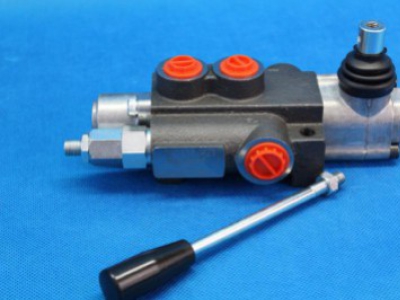Spool valve is a switching device for controlling hydraulic devices. Spool valves are used in everything from automotive power steering systems to cranes. The spool valve can turn on and off the flow of hydraulic fluid from the hydraulic pump to the actuator, blocking the path of the fluid.
Hydraulic spool valves can be used in many different ways to perform many different functions. One of the most common applications is to drive a pressure hydraulic piston. The piston is closed in a cylinder with a valve at each end, both leading to the spool valve. When the spool valve is in the "push" position, the fluid flows from the pump to the bottom of the cylinder, while the fluid in the upper part of the cylinder may flow out into the hydraulic reservoir. It pushes the piston out. When the valve is in the "pull" position, the fluid flows into the top of the cylinder and from the bottom, causing the piston to return to the cylinder.
.JPG)
.jpg)
A directional valve with the same size as the body - ports of the same size - the same electrical connections - can perform many different functions and all you have to do is change the spool
After switching on the solenoid, the valve moves to the opposite position. The pressure now passes straight to working port A. Working port B now goes to Tank. The middle position may be a third position or not used. If not used, the center position becomes a transition. When used, the middle position can hold the device in place or release pressure on the device.
In the transitional state, sometimes the pressure is maintained and sometimes abolished. This should be taken into account while maintaining the load and precise movements. Depending on the reel, you can choose what happens during the transition. In many cases, the transition is so fast that you will not notice it anyway. In some applications, the transition may be critical.
When it comes to choosing the right valve for the application, you can not leave the field of view. You must match the part numbers and operational specifications. In today's markets, when products become harder to find and delivery times become more and more difficult, contact a certified Hydraulic specialist or certified hydraulic fluid specialists.
.jpg)
.jpg)
.JPG)

